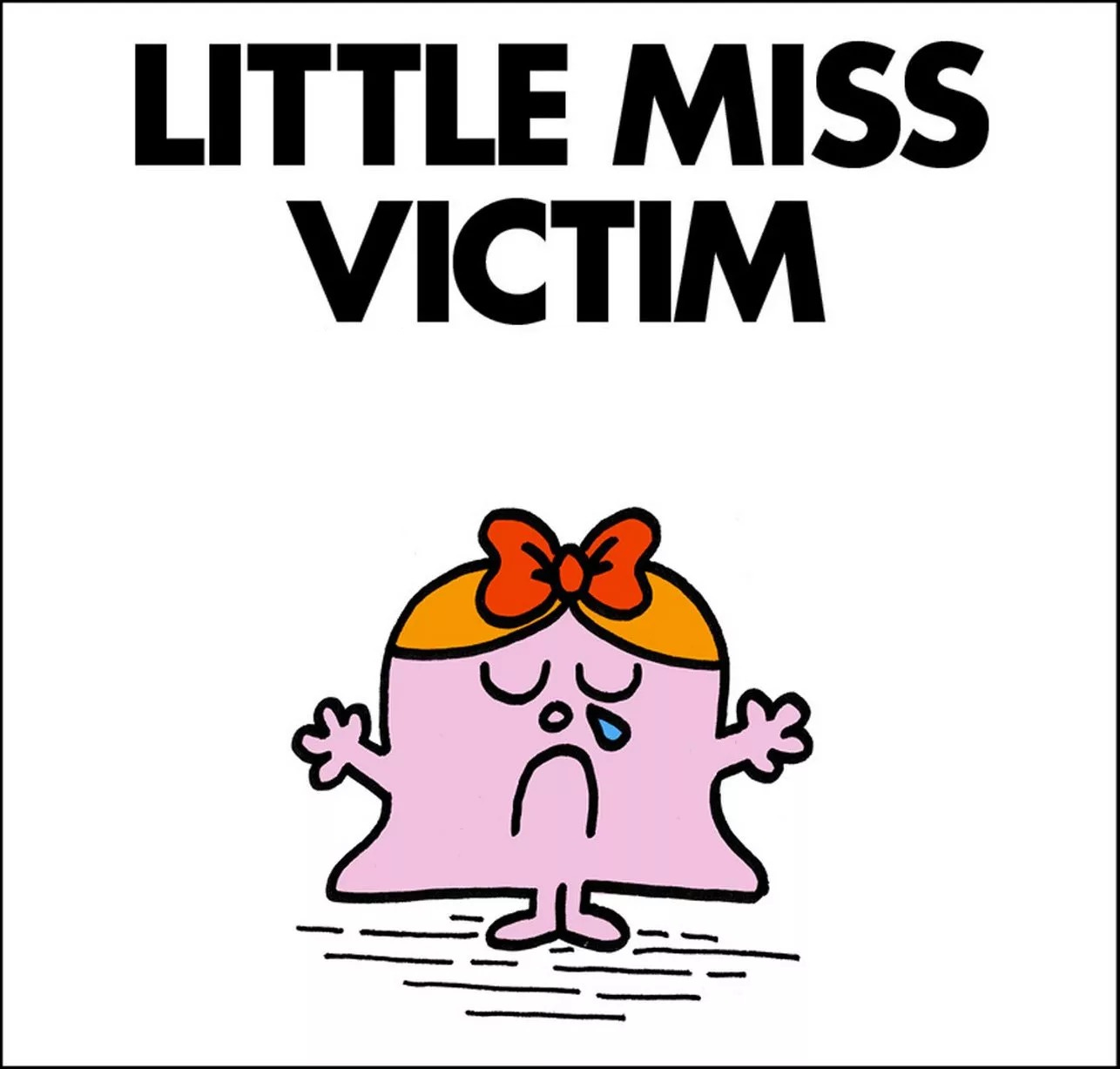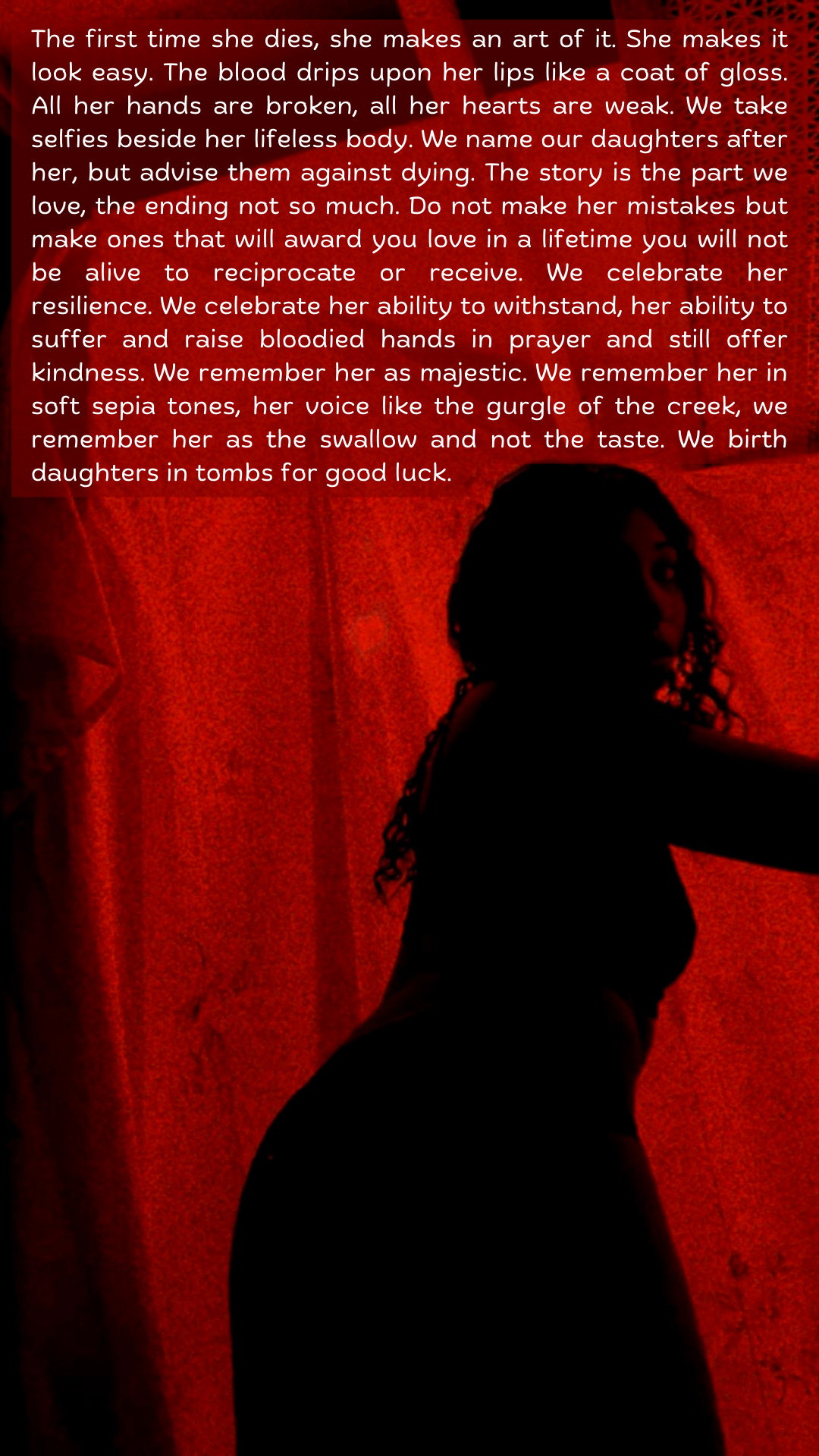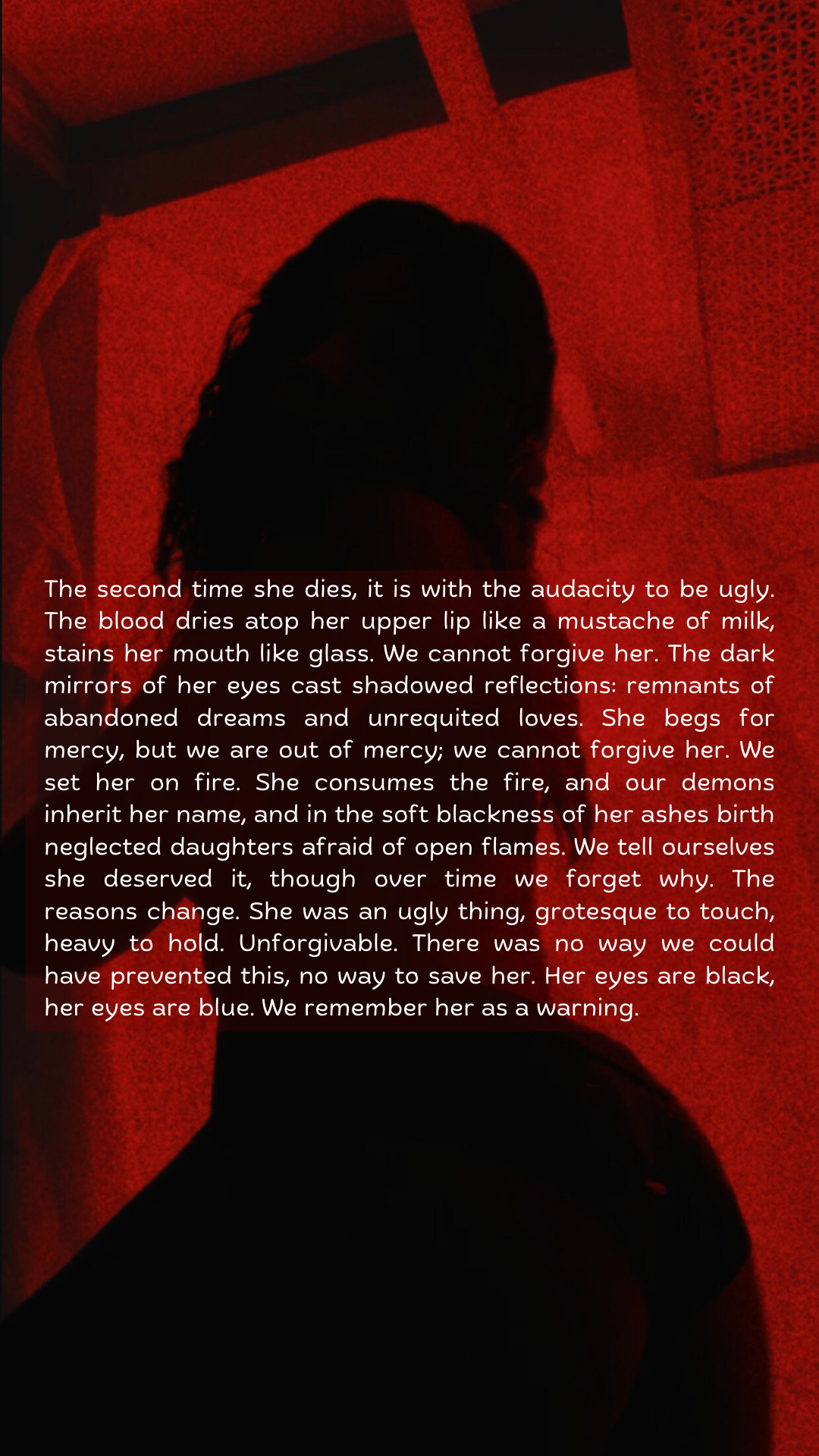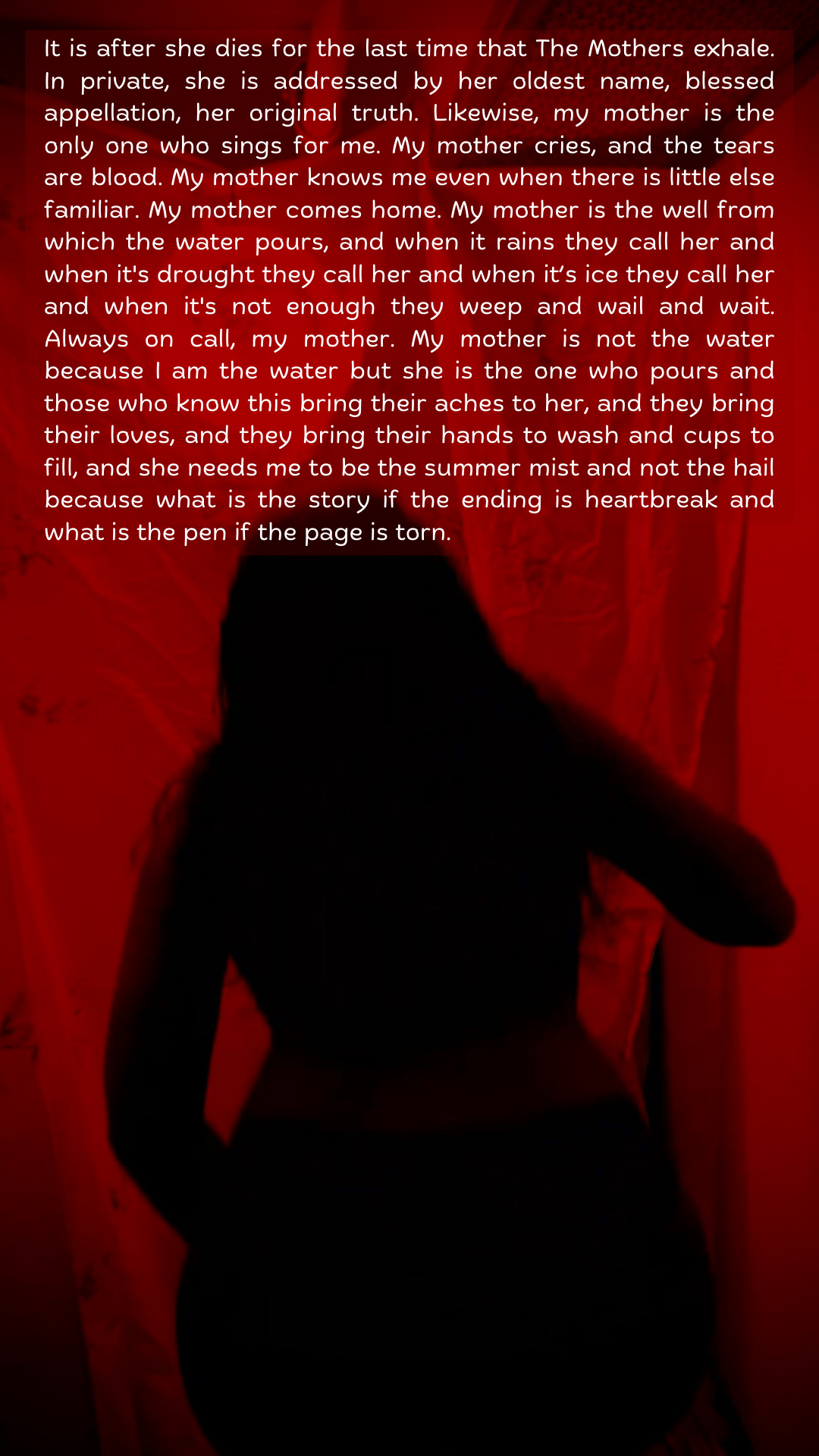If a poverty-stricken, dumpster-dwelling, roadkill-eating high school senior managed to still get straight A’s and miraculously landed acceptances into multiple Ivy Leagues, a news network would publicize that story as a feel good moment, as proof of the value of “discipline” and “resilience” under impossible conditions. Thousands of people would go on to read that story while commuting to their menial jobs and beam with pride, as if they too had just been accepted to Yale and Harvard. Invigorated with this inspiration, readers will humbly resolve to complain less about their own struggles in favor of expressing gratitude than grief, taking their setbacks in stride. They’ll praise the kid for being a “Survivor” who didn’t let his life go to waste just because he had it rough. They will admonish any future homeless teens they encounter for not trying hard enough, referencing this article. No one will wonder, “Why did he have to suffer like that in the first place?”1 or “How can we help him, or prevent this for others?”2 Instead, the teen is commended for his ability to help himself and his trauma is glossed over if ever acknowledged, and this is okay because because pain is—and don’t you forget it: Inevitable, Necessary, and Romantic.
The American romanticization of suffering is deeply ingrained, and the “If He Can Do It, Why Can’t You?” fallacy is but one of its many familiar iterations. The “Pain is Good, Actually” trope finds countless examples in religious texts, in fairytales, in the biographies of troubled artists, in history textbooks and in politics. It is the source of adults defending corporal punishment as appropriate for children. It’s everywhere.
However, even within these pro-pain narratives are rigid ideas of whose misery is romantic and worthy of recognition, pity, or praise and whose anguish is ugly and dismissible. In other words, there is a socially encouraged “right” and “wrong” way to suffer.
Survivors & Saints
The bible is rife with passages that advocate for piety when trouble strikes. For example, the biblical story of Job3 describes a hard-working, faithful and upstanding man who comes into sudden terrible misfortune because God decides to make a bet with the Devil…for fun. To prove to the Devil how unwaveringly loyal his worshippers are, God subjects Job, his most devoted follower, to immense devastation and destruction—his crops fail, his children drop dead like flies, he loses his livestock—but through it all Job maintains his faith, his strength of character and his loyalty. In the end, he is rewarded generously with new animals, bountiful crops and fertile new wives ready to birth new children to replace the dead ones. This is considered a happy ending.
In the case of a starving artist or musician, their creative output is heavily contextualized by any challenges they faced in their lives. Poverty, addiction, abuse and tragedy are common backdrops for countless beloved paintings, novels, and songs. This media is consumed voraciously, praised for how raw and wrenching it is, with fans marveling at how even in the face of darkness a broken artist can create a work of such beauty that it captures the light and holds time like a breath. This mindset is pervasive. There are performers whose popularity stagnates or declines after they work to get sober or address their mental health.4 Fans will joke online about how a rapper they enjoy is currently too happy and needs to go through some heartbreak so their next album will hit different. They’re mostly kidding, but they mean it in a way—true agony can’t be faked, and that authenticity is the base of what separates bad art from the good.
In the biblical example, we are presented with a Victim who is: blameless, respectable, and never crashes out no matter how unfair or dire the circumstances get. This victim is rewarded for his ability to withstand senseless misery—in this case, with a divine reversal of all his misfortune. This type of victim is what I’d like to dub, “The Saint.”5
The traumatized artist is a different type of Victim, but still a worthy one. While some fault may lie with them as far as their situations go, and while they may not always handle their pain with grace and their footsteps aren’t exactly ones advisable to follow, the Artist is the type of Victim who has successfully alchemized their mental and physical wounds into a thing of beauty, a commodity that can be sold, consumed, and cherished. Just as the struggling student transforms their tragedy into determination, the sad painter transforms their heartache into art. These types of Victims are “Survivors,” and their perseverance is rewarded with riches, fame, success.
Moral Alignments
Morality can be measured along five major categories: Caring, Fairness, Ingroup Loyalty, Authority and Purity. Those whose morals generally prioritize caring and fairness are said to have “individualizing values.” Moral emphasis on loyalty to your community, adherence to authority, and purity are represented as “binding values.” Individualizing values focus on unconditionally prohibiting harm and promoting impartial care, and therefore are incompatible with the belief that some people deserve harm. “Binding values,” by contrast, do not focus on prohibiting harm. Violations of binding values are perceived as immoral not because they are considered harmful but because they are seen as disloyal, disrespectful, or impure.6
Speaking broadly, American culture upholds binding values and judges individuals (including victims) along these lines. Examining again the story of Job under this lens, he exemplifies loyalty to his community (being an upstanding and well-liked person), adherence to authority (he does not doubt, curse or question God) and purity (he never rebukes his faith and does not act out when his life starts falling apart). The fundamental unfairness of his predicament is not objectionable, because within this belief system Harm is sometimes necessary or deserved. This narrative, therefore, reflects a moral reasoning overrepresented in modern-day society.
To be clear, America does not like Victims. They are seen as needy. Considered “weak.” After all, if suffering is inevitable, and no one is exempt, why should your misery get special attention? In the face of great adversity, one should know better than to let themselves become a Victim. It is a position to avoid at all costs. Instead, you should always strive to be a Hero: an individual who bypasses Victimhood altogether, who is so undeterred by the threat of injury and so unafraid of danger they are willing to suffer for the sake of putting an end not only to their own misery but to that of others as well.7
The most commonly referenced Hero of America’s imagination is the fabled “Good Guy With a Gun” who, after finding himself in the crowd against an active mass shooter, rather than let himself get perforated by a bullet like some kind of loser, pulls out his own weapon8, disarms the shooter, and saves the day. Some people are just built different.
But if you, an inglorious NPC, lack the fortitude and the wherewithal to become the Hero, then the least you can do is be a Saint or Survivor: a victim worth respecting, one with some dignity intact. And if neither Sainthood or Survivorship are attainable, then the next best option for a prospective victim is to be a Martyr.
To recap, The Saint is a victim whose circumstances improve due to either luck or their virtuous character, not usually from any direct effort on their part, yet Saints remain optimistic and kind no matter how dire things get. (The Saint passively overcomes misfortune.) The Survivor, by contrast, is flawed and human, and is a victim whose efforts—made either by choice or out of necessity—eventually elevate them to success or safety. (The Survivor actively overcomes misfortune, after involuntarily suffering.)
Unlike Saints and Survivors, however, Martyrs do not overcome. The Martyr is a victim who endures unimaginable horrors, often resulting in their early demise. Only then is their turmoil recognized as egregious and inhumane. The Martyr is the Perfect Victim, one who succumbed to tragedy but didn’t live to tell the tale. Put another way, the Martyr is a Saint whose luck ran out. Her counterpart is the individual who failed to save herself, who lacked luck or strength or verve, who never recovered, whose story elicits only contempt and shame, never pity: The Imperfect Victim, The Wretched. Simply put, social messaging implies victims who cannot make good use of their pain nor save themselves from it are better off dead if sympathy is what they seek.
The Aesthetics of Trauma
The idea that pain can or should be endured with grace, poise, and virtue sets the stage for both its romanticization and the glorification of violence, the existence of which is commonly excused as necessary, natural even. All these narratives weave together to arrive at a simple logic: Pain may be inevitable, but whenever possible it is better to be its deliverer than recipient, and should this not be an option, there are still ways to survive and ways one’s anguish can be reaped for great reward.
There are many who dream of violence. They thirst for war. They marvel at the force with which they can crush and smash and punch. For them, violence is power. It is something to inflict. Something to harness. Something that happens to other people.
For everyone else, pain is a lesson learnt early, sometimes through tears: steer clear of too hot, too sharp, too rough, too fast. Children come to understand this one by one, in those early days when scrapes, burns and blood are always an ugly surprise, the end result of tragic curiosities. Gradually, as they learn to recognize danger and minimize their exposure to harm, these encounters become less frequent.
Except for the girls. For them, pain will linger. It will be internal and external and it will be chronic. It will originate within her and her endurance will be easy. She will hurt herself willingly, sacrifice her own comfort with enthusiasm. She will deem it necessary and inevitable, understanding pain to be a currency unlike any other: the price one pays for beauty, for inhabiting a body, for daring to love and be loved. Hers is an intimate familiarity, for pain is the natural state of her world.
From the show Fleabag: Women are born with pain built in. It's our physical destiny. Period pains, sore boobs, childbirth, you know. We carry it within ourselves throughout our lives. Men don't. They have to seek it out. They invent all these gods and demons and things just so they can feel guilty about things, which is something we also do very well on our own. And then they create wars, so they can feel things and touch each other, and when there aren't any wars they can play rugby. And we have it all going on in here, inside. We have pain on a cycle for years and years and years and then, just when you feel you are making peace with it all, what happens? The menopause comes. The fucking menopause comes and it is the most most wonderful fucking thing in the world! And, yes, your entire pelvic floor crumbles and you get fucking hot and no-one cares, but then you're free. No longer a slave, no longer a machine, with parts. You're just a person in business.”
Seemingly benign gendered introductions to physical discomfort begin with little mantras like, “Beauty is Pain.” Accidental burns from heat styling hair, little nicks from shaving, hot wax, chemical lotions, surgeries and starvation are all at the cost of being beautiful, itself another form of currency. Beauty is not a promise, but it is certainly a door.
The art of suffering, the practice of acceptable victimhood, is rooted in exercising mindful and tedious management of pain. Girls quickly become experts at this as their bodies subject them to the same ailments month after month, to varying degrees of intensity. Pain becomes ritualistic. The blood, the plucking, the pruning, the endless toll of it all—most of these things are manageable. And even if they aren’t, you’d never know. That is the factor that separates The Wretched from the rest: an inability or refusal to defer to the comfort of others by masking one’s pain as a courtesy. Bleed all you want but don’t let it drip onto the carpet—that would be rude. Cry if you must, but do so privately, spare us the spectacle of your blubbering sobs and the snot creeping down the hills of your lips. Failing to maintain the facade violates the moral value of purity, and the discomfort it evokes is a violation of loyalty, too.
Picking Your Poison
Of course, these strategies and standards are not and never were about protection, prevention or healing—only complacency and compliance. They rely on self-abandonment to properly take effect. And once she has mastered this, once she has been fully groomed to understand that pain: can be managed, can be cashed in for beauty, is inevitable, is the only way she’ll learn, is necessary so she’ll understand, is an act of love, is a test of faith, is what she deserves—she’ll acquiesce. She’ll smile. In fact, she’ll ask for more.
Yet, she will seldom have the chance to be a Hero or a Saint. With any luck, she may emerge a Survivor. But the vast majority of her sisters will oscillate between adopting the lesser of two evils: the unenviable role of The Wretched, or the doomed fate of The Martyr.
I originally intended to write about "sad girl" tropes and how women make use of their pain, referencing different films where this is a major plot point. But the piece took an unexpected turn, so I will revisit those ideas at a later date. Still, I think this is actually a great foundation for a lot of the points I wanna cover next. Stay tuned for part two on the art of suffering!
As always, thank you for being here, thank you for reading. Please feel free to comment, to restack, to ask questions or chat. Or let me know if you liked my poem! I overlayed it with old selfies but I felt like it was an strong match with this piece. Basically I would just love to hear from you -- it would truly make my day 💛 Some folks are just born unlucky, sorry 🤷🏽♀️
Let’s incentivize leadership, not laziness, okay? 🤓
I haven’t read the story since I was a child and didn’t want to look it up again so I’m paraphrasing like crazy here but just follow along, thanks 😭
Chance the Rapper is a classic example.
While I did dedicate some research to learning a little about victimology for this essay, the names and definitions I use to describe my identified tropes are all my own 100%, and not tied to any formal academic thought. I just wanted a shorthand for the concepts I introduce.
https://doi.org/10.1177/0146167216653933 Niemi, Laura, and Liane Young. "When and Why We See Victims as Responsible." Personality and Social Psychology Bulletin 42.9 (2016): 1227-1242.
“The ideal victim is a person or a category of individuals who - when hit by crime - most readily are given the complete and legitimate status of being a victim. The ideal victim is a sort of public status of the same type and level of abstraction as that for example of a ‘hero’ or a ‘traitor.’” Christie, N. (1986). The Ideal Victim. In E. A. Fattah (Ed.), From Crime Policy to Victim Policy (pp. 17-30). London: The Macmillan Press Ltd.
🔫 Stay ready so you don’t have to get ready.







